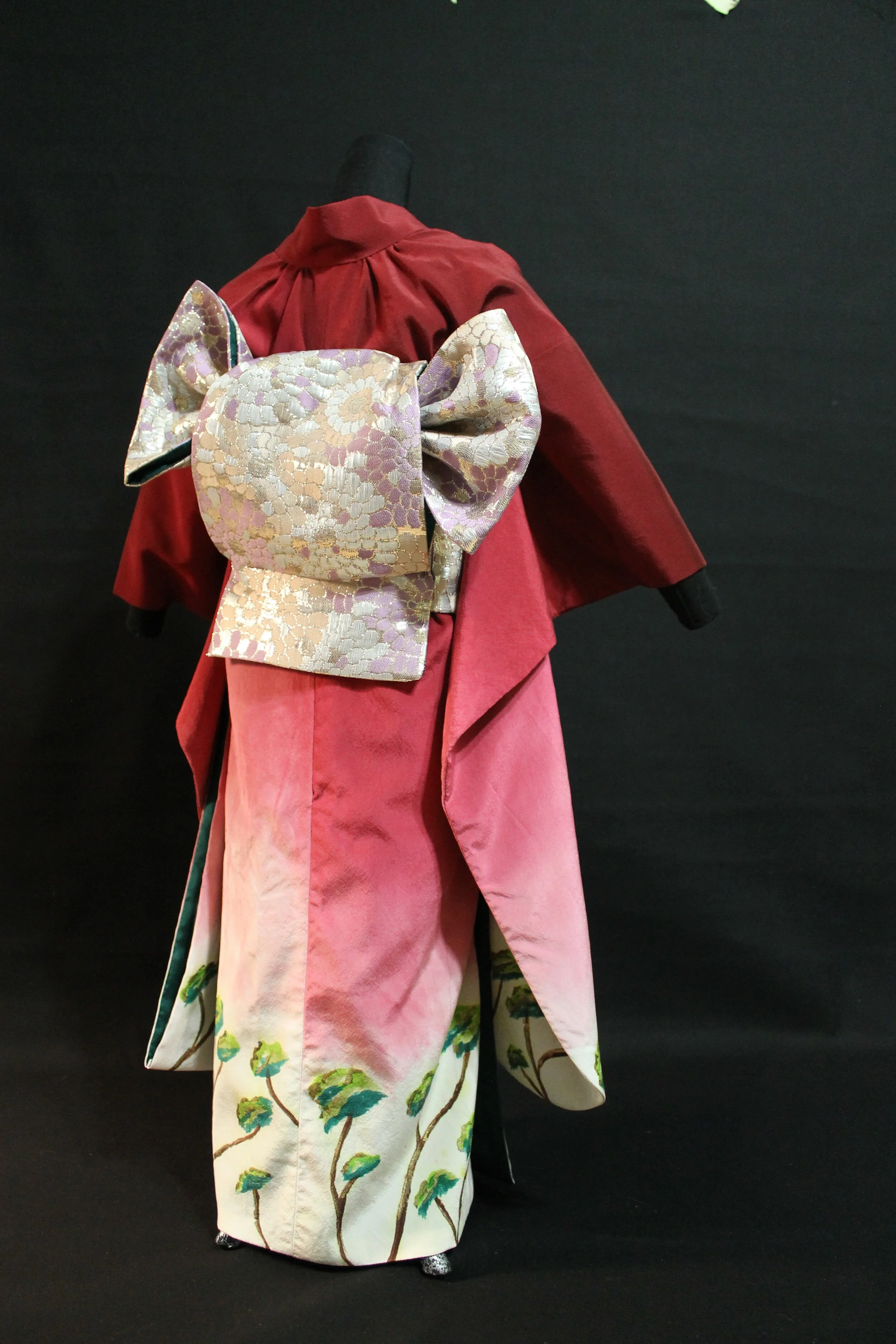Benizara and Kakezara
The Japanese Cinderella Story
Research
1920s illustrations and photographs revealed a simplified approach to the kimono, and some fusion between Japanese tradition and Western fashion. Later, my reading indicated that many Japanese were eager to take on Western clothing as a symbol of progress, encouraged by national leadership.
Lebanese fashion designer Elie Saab used touches of inspiration from various parts of Asia in his Fall/Winter 2019 couture collection. Here, the slim silhouette emphasized by voluminous skirt in the back, combined with a wide belt, carries echoes of Japanese design.
Though I could discern differences among the clothing in these illustrations, and even in the way the illustrations are executed, initially I had no clue what the significance of these differences might have been, or what time periods they might be associated with.
This furisode kimono from the 1920s or 1930s is closely related in style to what i ultimately designed for Benizara. The long, fluttering sleeves are appropriate for unmarried women of the age to marry.
Artist Ikenaga Yasunari uses a traditional painting technique to depict contemporary Japenese women. These choices clearly show the complexities of cultural identity in today’s globalized world.
Yumi Katsura, a Japanese designer, riffed on kimono in her Spring/Summer 2019 collection for Paris Fashion Week.
Contemporary Interpretation
A company in Japan remakes vintage kimono into Western-style wedding dresses, available for rent.
Japanese fashion is nothing if not inventive. Kimono are being interpreted in new ways all the time, and the Japanese have been happily sharing kimono with enthusiasts from other parts of the world for a long time.
Design
I chose a bonsai tree motif for the kimono because of Benizara’s poem about a lone pine tree.
Most furisode kimono worn by young women are very heavily patterned. I liked the simplicity of this kimono, both because it felt achievable, and because it would help Benizara to stand out in a crowded theatre if she was less heavily decorated than the other women her age.
Rendering for Benizara. Even at the time I drew this, there was so much I did not know about kimono construction and wear. If I redrew it now, I could express some of this new knowledge in the drawing!
Usually, the obi should contrast with the kimono, often in multiple ways. Not only did I choose contrasting color for the Benizara’s obi, I chose the sparrow knot. A bird free to fly contrasts with the tree, bound to the earth.
Though I did not fully design Benizara’s everyday look, I was inspired by the 1940s. Women during wartime were encouraged to wear “mompe” pants like those pictured above, and kimono became a rare luxury during wartime.
The finished product. Even besides dyeing and hand-painting the silk, making a kimono was MUCH more difficult than I expected it to be. I learned a lot about the construction as I went, which unfortunately did cause some less than ideal placement with the painting I had already done. Next time I’d be able to plan ahead better to avoid this.
